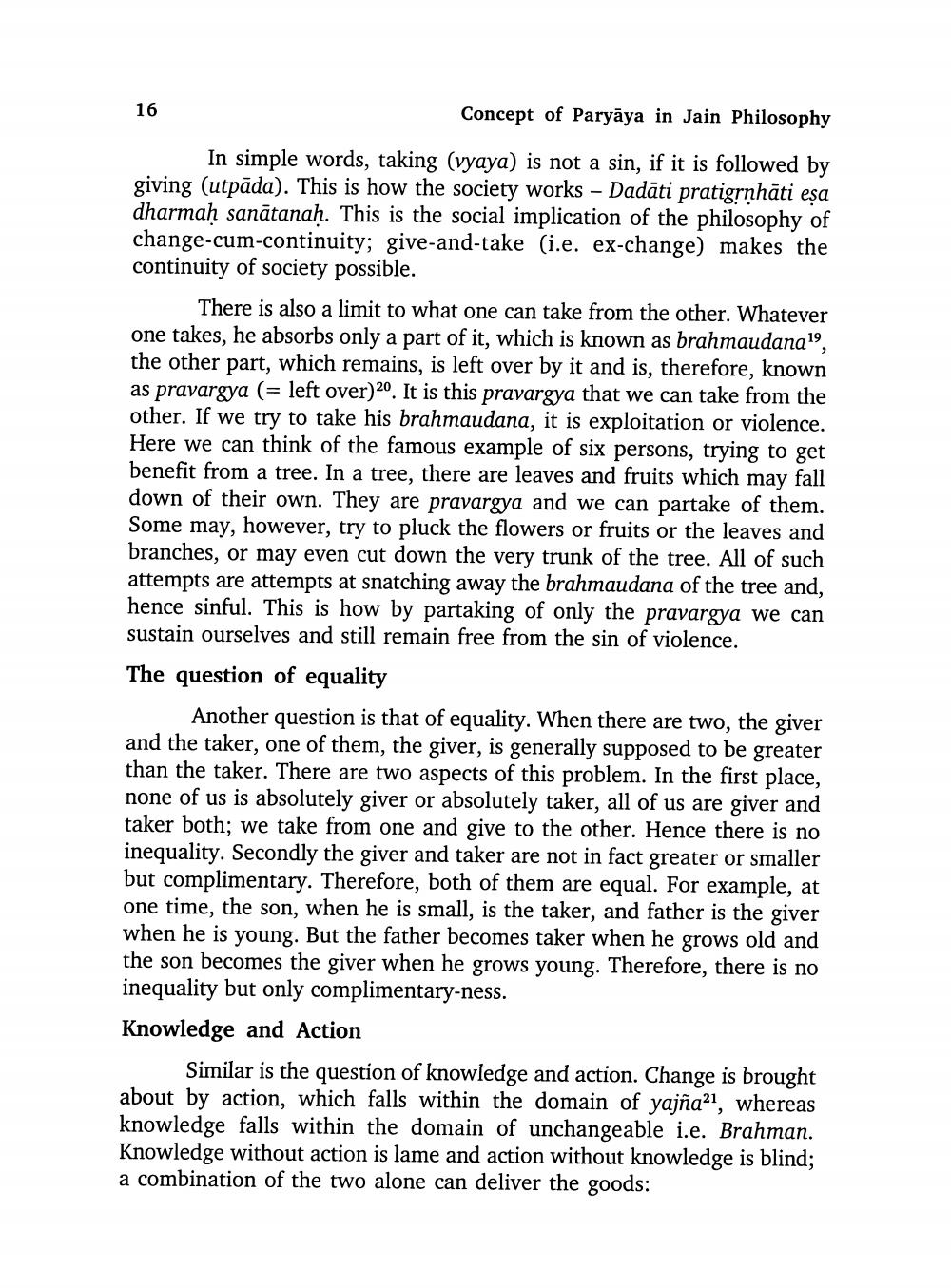________________ 16 Concept of Paryaya in Jain Philosophy In simple words, taking (vyaya) is not a sin, if it is followed by giving (utpada). This is how the society works - Dadati pratigrnhati esa dharmah sanatanah. This is the social implication of the philosophy of change-cum-continuity; give-and-take (i.e. ex-change) makes the continuity of society possible. There is also a limit to what one can take from the other. Whatever one takes, he absorbs only a part of it, which is known as brahmaudana'', the other part, which remains, is left over by it and is, therefore, known as pravargya (= left over)20. It is this pravargya that we can take from the other. If we try to take his brahmaudana, it is exploitation or violence. Here we can think of the famous example of six persons, trying to get benefit from a tree. In a tree, there are leaves and fruits which may fall down of their own. They are pravargya and we can partake of them. Some may, however, try to pluck the flowers or fruits or the leaves and branches, or may even cut down the very trunk of the tree. All of such attempts are attempts at snatching away the brahmaudana of the tree and, hence sinful. This is how by partaking of only the pravargya we can sustain ourselves and still remain free from the sin of violence. The question of equality Another question is that of equality. When there are two, the giver and the taker, one of them, the giver, is generally supposed to be greater than the taker. There are two aspects of this problem. In the first place, none of us is absolutely giver or absolutely taker, all of us are giver and taker both; we take from one and give to the other. Hence there is no inequality. Secondly the giver and taker are not in fact greater or smaller but complimentary. Therefore, both of them are equal. For example, at one time, the son, when he is small, is the taker, and father is the giver when he is young. But the father becomes taker when he grows old and the son becomes the giver when he grows young. Therefore, there is no inequality but only complimentary-ness. Knowledge and Action Similar is the question of knowledge and action. Change is brought about by action, which falls within the domain of yajnaal, whereas knowledge falls within the domain of unchangeable i.e. Brahman. Knowledge without action is lame and action without knowledge is blind; a combination of the two alone can deliver the goods:




